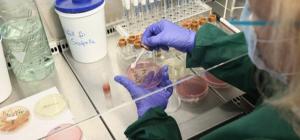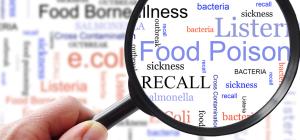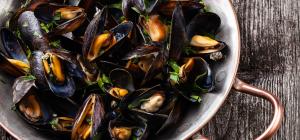
Climate change, coastal communities, and food from the sea

Climate change is predicted to have significant impacts on food globally, with foods grown in the sea affected by changing ocean conditions and more frequent, intense, and prolonged extreme events. The abundance, distribution, safety, and nutritional content of foods produced from the sea will be affected, including self-harvested seafoods and traditional food sources of key importance to coastal communities of Canada. This will have consequences for coastal food safety and security, and highlights an important role for experts and authorities, including public health practitioners, in helping to build resilience of coastal food systems.
Changing baselines and more frequent extremes
Climate change is predicted to cause changes in seawater conditions (e.g., warming, acidification, decreasing salinity, decreased dissolved oxygen, etc.). These changes can cause physiological stress that affects growth, metabolism, reproduction, and survival of various seafood species from shellfish to forage fishes. Species that cannot tolerate these changes will experience adverse physiological effects, gradual shifts in geographic distribution, or may simply not survive. Species may be even less able to tolerate change when there are multiple stressors. This will lead to changing food availability, composition, and quality over time.
Climate change is also predicted to cause more frequent, intense, and prolonged extreme events (e.g., heatwaves, atmospheric rivers, etc.). This can cause extreme stress to organisms that can result in mass mortality. Examples include the atmospheric river in San Francisco Bay in 2011 that caused rapid and prolonged low salinity, correlating with mass mortality of Olympia oysters. In the June 2021 heat dome in the Pacific Northwest, temperatures of some intertidal habitats reached > 50°C, causing mortality of billions of marine animals, including many shellfish. Organisms may be more tolerant of short-term extremes than prolonged extremes, and tolerance decreases over time with repeated exposures. Extreme events could result in sudden food shortages, or complete eradication of food types in some areas.
Some seafood species will benefit from changes such as warming, increasing access to northern habitats, while southern habitats become less habitable (e.g., American lobster, Pacific oyster). Warming, however, is also linked to the prevalence of certain infections, such as epizootic shell disease in lobsters, and Vibrio infection in oysters. Climate change will have a major impact on the diversity, abundance, and distribution of many marine microorganisms, including pathogens, harmful algal blooms (HABs), and primary producers, like phytoplankton, the foundation of coastal food systems.
Effects on food security and safety
Food security refers to sustainable and affordable access to sufficient, nutritious, and preferable foods. Seafood is an important food source for coastal communities in Canada, providing dietary sources of protein, iron, vitamin B, and other nutrients, and has significant economic and cultural value. Demand for seafood in Canada and globally is predicted to increase in the coming years, but the 2022 Intergovernmental Panel on Climate Change notes with high confidence that climate change will cause a change in the abundance and distribution of important food sources like shellfish. Self-harvested and farmed seafood (e.g., salmon, mussels, etc.) will experience pressures throughout this century due to direct and indirect effects of climate change. Overall climate change impacts on food safety and security can weaken food systems as outlined in Health Canada’s 2022 publication “Health in a changing climate”. Table 1 summarizes some of the key impacts of importance to public health identified in this report, and the wider literature.
Table 1 Key impacts of climate change on coastal food safety and security
|
Climate change impact |
|
Food safety and security implications |
|
Reduced availability of some foods and increased abundance of warm water species. |
➡️ |
Increased competition for food and forced changes to diets and commercial operations. |
|
Changed abundance and availability of important forage fish (e.g., herring, mackerel). |
➡️ |
|
|
Changed weather patterns affecting the timing of food harvesting and processing. |
➡️ |
Impacts on nutrition, livelihoods, and culturally important practices. |
|
Impaired shoreline access and safety due to flooding, coastal erosion etc. |
➡️ |
Reduced shoreline safety and increased injury potential. |
|
Changed yield, size, calorie, and nutritional content of some foods due to warming or acidification stressors on species. |
➡️ |
Reduced nutrition of some foods (e.g., one study estimates 21-31% reduced intake of essential nutrients by 2050 for some coastal communities). |
|
Magnified effects across trophic levels (e.g., reduced synthesis of docosahexaenoic acid (DHA) by marine phytoplankton). |
➡️ |
Reduced food chain transfer of important fatty acid (DHA) to fish and subsequently to humans, causing dietary deficits. |
|
Extreme weather driving more pollutants into coastal environments, and warming and acidification influencing toxicity levels. |
➡️ |
Increased bioaccumulation of some pollutants in seafood (e.g., persistent organics and mercury). |
|
Warming causing increased occurrence of pathogens such as Vibrio spp. |
➡️ |
Increased shellfish mortality and human illness (e.g., Vibrio outbreaks in raw oysters). |
|
Intense rainfall events increasing stormflow, terrestrial runoff, and sewer overflows. |
➡️ |
Increased pollutants and human pathogens (e.g., norovirus) affecting coastal habitats and foods. |
|
Nutrient loading and warming affecting the occurrence of harmful algal blooms. |
➡️ |
Increased potential for marine shellfish poisoning with health, cultural, and economic impacts. |
Coastal food systems adaptation
Food systems are complex and it is difficult to predict and address the multiple interacting climate change effects on coastal food systems and communities. Climate change intersects with different community vulnerabilities. In addition to physical health effects, mental health impacts may also arise from the loss of income, food security, access to foods of cultural and ceremonial importance, and ecological grief.
The United Nations (UN) has declared 2021-2030 the Decade of Ocean Science for Sustainable Development and has identified community resilience to ocean hazards as a key challenge of this decade. There is a need for the public to be informed about the possible health risks related to climate change, and for communities to build the skills and knowledge to respond effectively. Experts and authorities, including public health practice, can help communities to build resilience, though they also face barriers and knowledge gaps.
Adapting to the effects of climate change on coastal foods will require overcoming some of these barriers and knowledge gaps including:
- Improving access to environmental quality data and observations collected by regional, provincial, and federal agencies, and communities through increased monitoring and surveillance, and access to web-based tools for sharing data and observations.
- Identifying ways to better draw together Indigenous knowledge, academic resources, and government data to improve the understanding of how species diversity, abundance, distribution, and condition are changing in response to climate change stressors.
- Using trend analysis and modelling to develop forecasting or prediction tools linked to alert systems (e.g., mapping safe harvesting sites with tools like the “Can U Dig It” mobile app from the Q’ul-lhanumutsun Aquatic Resources Society)
- Providing support for environmental and food testing following extreme events (e.g., shellfish testing during or following a HAB) to assist quicker recovery from harvesting closures.
- Assisting communities in identifying which food types are most at risk and identifying options for diversification of food types or harvesting practices (e.g., onshore mariculture, deeper/colder water harvesting, earlier/later harvesting) where possible.
- Raising awareness of worsening or emerging food safety issues through education and outreach, and helping communities respond to events by sharing success stories and novel adaptation approaches.
- Assisting communities in assessing the feasibility of traditional, contemporary, and cutting-edge solutions, such as tools for mitigating HABs, or applying post-harvest treatments to foods (e.g., temperature controls, treatment, or depuration).
- Assessing the feasibility of nature-based solutions to protect and restore coastal habitats, ensuring consideration of maladaptation
- Coordinating responses to hazards arising from extreme events or changing ocean conditions, and fostering collaboration between community partners and other key actors.
Public health taking the lead
A systems approach that brings together multiple actors and organizations to harness existing knowledge, record observations and identify changes, and develop potential solutions can help overcome some of the barriers and knowledge gaps identified above. One collaborative project undertaken by the First Nations Health Authority in partnership with BC Centre for Disease Control (supported by the NCCEH), is engaging with Indigenous communities, and other partners to address some of these key issues (see Box 1).
Box 1: Partnering with public health to address climate change impacts on coastal food security
|
Box 1: Partnering with public health to address climate change impacts on coastal food security |
|
|
Public health (PH) practitioners could play a crucial role in helping communities, in partnership with provincial and federal agencies, and local governments, to minimise the impacts of climate change on coastal food systems. The Government of Canada is currently consulting on the country’s first National Adaptation Strategy. This provides a timely opportunity to highlight issues of importance and urgency to coastal food systems, and to help frame the role and contributions of public health to future adaptation policy.
Author
Juliette O'Keeffe is an EH & KT Scientist at the NCCEH.

 The “
The “






